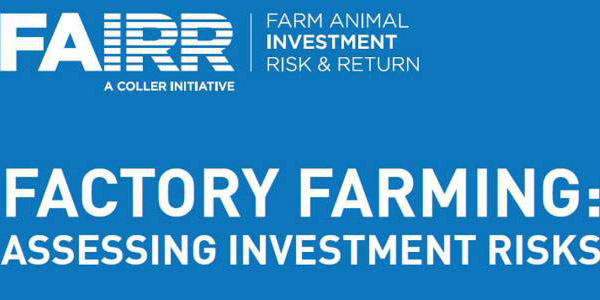As a consumer, you’re empowered to bring about change with every dollar you spend. The food-purchasing decisions you make today are shaping tomorrow’s food system…along with factors like the investment decisions of financial institutions.
In a new report entitled “Factory Farming: Assessing Investment Risks,” Farm Animal Investment Risk and Return (FAIRR) addresses the range of environmental, social and governance (ESG) issues that present risks to industrialized meat and fish production. This is the first study to analyze the industry through the ESG lens, bridging a sizable knowledge gap for the investment community.
Compiled with input from Farm Forward and over 165 additional sources, the FAIRR report estimates that over 70 percent of the world’s farm animals are now factory farmed, including approximately 99 percent of U.S. farm animals. The trend is expected to continue as emerging economies gain more wealth.
FAIRR explores short- and long-term risks, identifying 28 ESG issues that could have a negative impact on companies connected with animal factory farm investments:
- Environmental—Disease outbreaks, greenhouse gas emissions, deforestation and biodiversity loss, natural hazards, climate change, water pollution, water scarcity, poor animal welfare, waste generation, high water use, air pollution, soil degradation and desertification.
- Social—Excessive antibiotic use, spread of infectious diseases/global health pandemics, social backlash, changing consumer preferences, poor working conditions, human rights violations, labor availability and productivity, health impacts on surrounding communities, loss of rural livelihoods, land rights violations, social license to operate compromised.
- Governance—Policy changes (e.g., removal of government subsidies, changes to policy, trade restrictions), weak regulatory oversight, sustainability disclosure, corporate governance.
Although the report addresses the investor audience, it is essential reading for conscious eaters. The case studies and facts and figures surrounding factory farming never cease to be eye-opening. For example, the industry is the top user of antibiotics in the United States. Eighty percent of all antibiotic use is on factory farms and unsupervised by a medical professional. It is responsible for a greater percentage of greenhouse gas emissions than the transport sector. The list goes on. Check it out.

